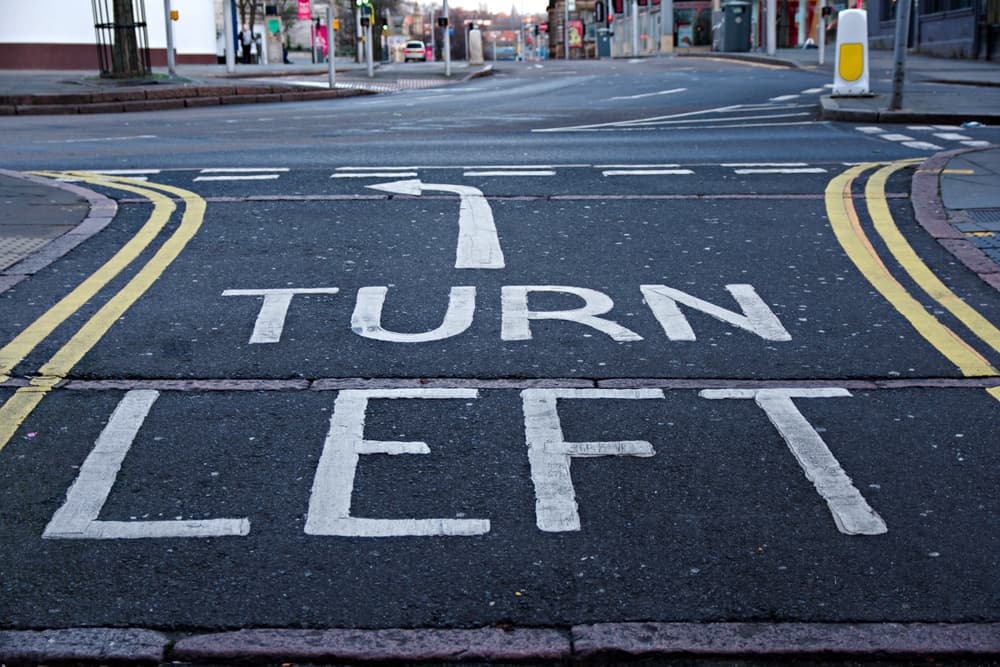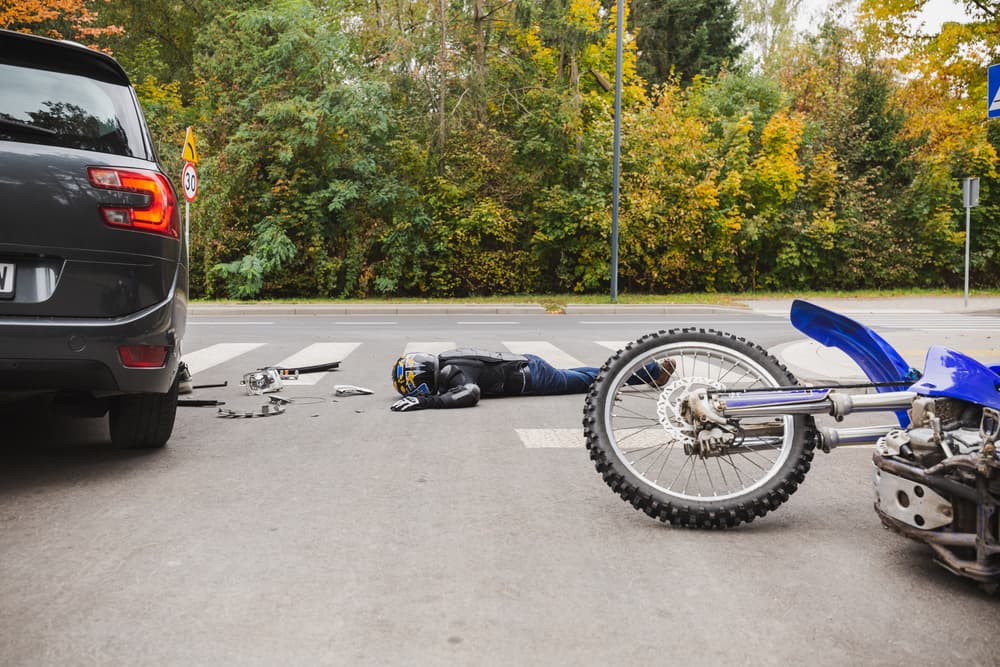The question of whether motorcycles have the right of way is complicated and often leads to heated debates and conflicting opinions. In reality, the right of way should not be based on opinions, as who has the right to proceed in traffic situations should be rooted in traffic laws.
Like all vehicles, motorcycles must adhere to traffic laws and regulations. However, drivers of passenger vehicles must also respect all traffic rules regarding motorcycles, including those involving the right of way. Too often, drivers encroach on motorcycles, cutting them off or completely ignoring their right of way rights, causing serious collisions and injuries.
Everyone on the road should be aware of laws regarding the right of way in all applicable situations, no matter what type of vehicle they are driving. Further, negligent drivers should not automatically blame motorcyclists for accidents simply because they are considered more “reckless.”
In reality, negligent drivers cause most motorcycle collisions, and many involve drivers' right of way errors. When motorcyclists do nothing wrong and suffer life-changing injuries, they have important legal rights.
In this situation, always consult an experienced motorcycle accident attorney who can assess liability in your collision. If you are unsure about your rights, seeking legal advice is the best step you can take. The right attorney can stand up for you to insurance companies that might have motorcyclist bias and try to blame you to avoid liability.
Below is some information about motorcyclists and rights of way.
Schedule A Consultation Today!
Understanding the Right of Way
When anyone is navigating the road, understanding the concept of the right of way is necessary. The right of way refers to the privilege of proceeding first in a traffic situation. It determines which vehicle or pedestrian has priority and should be given deference over others. This principle exists to promote order, safety, and efficiency on the roads.
With motorcycles, the right of way works similarly to other vehicles. Motorcycles have the same rights and responsibilities as cars, trucks, and other motor vehicles. They have the right to occupy a lane, pass slower vehicles when it is safe to do so, and be treated with respect by other road users.
However, having the right of way does not mean motorcyclists can disregard traffic laws or drive recklessly. They must still abide by speed limits, yield to pedestrians, and follow all relevant traffic signals and signs. Remember, with the freedom of riding a motorcycle also comes the responsibility to do so safely and lawfully.
Even when motorcyclists follow all the rules, other negligent drivers can violate the right of way and collide with motorcycles.
Traffic Laws and Right of Way
Understanding right of way rules can be difficult, especially when you're on a motorcycle. As a rider, it's important to be aware of traffic laws and your rights on the road to ensure your safety.
Making Left Turns

When making a left turn, motorcycles are often disadvantaged due to their smaller size and potential blind spots. However, motorcycles have the right of way when they have a signal allowing them to turn. As a motorcyclist, make sure to use your turn signals and check for oncoming traffic before proceeding. When other drivers are making left turns, they should yield to your right of way if you are oncoming traffic.
Making Right Turns
When making right turns, motorcycles are also treated the same as any other vehicle. However, due to their size and agility, motorcycles can maneuver through traffic more quickly. As a motorcyclist, it's important to signal your intention to turn and make sure to yield to pedestrians and other vehicles when necessary. Other drivers should also yield to you before they make a right turn.
At Four-Way Stops
At a four-way stop, the general rule is to yield to the vehicle on your right. This applies to motorcycles as well. If you arrive at a four-way stop simultaneously with another vehicle, the vehicle on the right should proceed first. As a motorcyclist, stay vigilant and assert your right of way when appropriate. Unfortunately, this does not mean other drivers will follow the rules.
Turning from Driveways
When exiting a driveway, motorcycles often have to contend with limited visibility and the potential for vehicles speeding by. Motorcyclists should signal their intention to turn and wait for a safe gap in traffic before entering the road. Other drivers should be aware of motorcycles and yield to their right of way when exiting driveways.
Merging
Whether you're merging into traffic or other vehicles are merging into your lane, understanding the right of way can prevent accidents and ensure a smooth transition. Motorcycles have the right of way when merging, just like any other vehicle. As a motorcyclist, make sure to signal your intention to merge and create enough space for a safe entry into traffic. Other drivers should also merge appropriately and respect your right to be in a lane with your motorcycle, waiting their turn.
Remember to always be aware of your surroundings, signal your intentions, and assert your right of way when necessary. If you ever find yourself in a situation where your rights are violated by another driver, causing you injuries, speak with a motorcycle accident attorney to start the process of seeking the compensation you deserve.
Factors Influencing the Right of Way in Motorcycle Accidents

Determining the right of way in motorcycle accidents can be particularly challenging due to various factors that come into play. Some of these factors include:
Visibility
Motorcycles are smaller and less visible than cars and trucks. This lack of visibility can contribute to accidents and make it difficult for other drivers to see motorcycles in their blind spots. When a collision occurs due to a driver not seeing a motorcycle, determining the right of way can become complicated.
Speed
Speed is a critical factor in determining the right of way. If a driver exceeds the speed limit, they may be at fault in an accident, even if they are within right of way rules. On the other hand, if a driver fails to yield or misjudges the speed of a motorcycle, they may also be deemed responsible for the collision.
Road Conditions
The condition of the road can also play a significant role in motorcycle accidents. Poorly maintained roads, slippery surfaces, or debris on the road can cause a motorcyclist to lose control, increasing the risk of accidents. In these situations, determining the right of way may involve assessing the condition of the road and any contributing factors.
Assessing all these factors makes proving fault in right of way accidents even more complicated. You need a motorcycle accident lawyer to conduct a professional investigation in many cases.
Lane Splitting and Lane Filtering
Motorcycles’ size can sometimes be a detriment, but in some cases, it can be a bonus for the rider. A two-wheeled vehicle can maneuver more easily than something bigger, which means it can bypass heavy traffic congestion. However, motorcyclists must be aware of their rights regarding traffic mitigation, including lane splitting and filtering.
Lane Splitting
Lane splitting is the process by which motorcyclists overtake many cars at once. There may be lines of traffic with enough space between the rows of vehicles, offering a tempting route between the lanes, bypassing the traffic.
Lane splitting is illegal in most states, but several states have no laws on the matter, and a few others allow the practice. States such as California, Montana, and Utah have legalized lane splitting — in California, it is illegal to prevent it. The following states have no laws on lane splitting:
- Delaware
- Kentucky
- Mississippi
- Nebraska
- Utah
Some states, like Minnesota, will allow legal lane-splitting next year. Every motorcyclist should know the laws in the states where they ride so they do not violate them.
Lane Filtering
Lane filtering occurs when motorcycles pass stationary cars. Instead of passing between lanes, as in lane splitting, the motorcyclist uses the same lane as the car it is passing. Certain states allow legal lane filtering, though certain restrictions may apply. For lane filtering to be lawful, all cars on both sides must be completely stopped.
Lane filtering is currently illegal or prohibited in many states, though in these states, it is legal under certain conditions:
- Arizona
- Colorado
- New Jersey
Other states are considering passing lane filtering laws, so it is necessary to research the state where you intend to drive a motorcycle.
If you suffered an injury in a lane splitting or lane filtering accident and you can prove another driver violated the state’s right of way rules, you may be entitled to compensation. A motorcycle accident attorney can take on a possible claim.
Myths About Motorcycles’ Right of Way

People tend to have many misconceptions about motorcyclists’ right of way and collisions, and the following are mostly untrue.
Motorcycles Are Always to Blame
Some may think that motorcyclists are more at fault than others, especially in accidents involving bigger vehicles. In reality, this isn’t true: the fault lies in whoever was negligent, and it is often drivers.
Motorcycles Have More Right of Way Than Others
Of course, the idea that a motorcycle has any more rights than other vehicles is incorrect. Though in certain conditions, motorcycles have a different right of way (lane filtering, for example), each state has traffic laws that apply to all road users, motorcycles included.
While myths like these are easily debunked, motorcyclists can still face problems with insurance companies following accidents. Insurers tend to automatically blame motorcyclists, leading to challenges when seeking compensation.
The Importance of Legal Representation in Motorcycle Accidents
Right of way violations by drivers can cause serious collisions with motorcycles. T-bones, sideswipes, and rear-end collisions are all significantly more devastating for motorcyclists, as they are often thrown from their bikes or pinned between vehicles. The injuries and losses can be catastrophic.
Given the challenges often involved in determining the right of way and liability in motorcycle accidents, seeking legal representation becomes critical. An experienced motorcycle accident attorney can protect your rights, handle all insurance claims, and ensure fair compensation for your injuries and damages.
Gathering Evidence
A skilled attorney will conduct a thorough investigation to gather all the necessary evidence to support your claim. This may include obtaining police reports, interviewing witnesses, analyzing accident scene photos, and obtaining any available surveillance footage. This evidence will help establish the facts of the case and determine who had the right of way.
Expert Witnesses
In some cases, an attorney may employ the expertise of accident reconstruction specialists or other experts to provide testimony regarding the collision. These experts can help recreate the accident and present a clear picture of what occurred, aiding in determining fault and the right of way.
Negotiating with Insurance Companies

Insurance companies are known for trying to minimize their financial liability in accident claims. Having a skilled attorney on your side can level the playing field and ensure you receive fair compensation for your injuries and damages. They will negotiate with the insurance company on your behalf, advocating for your rights and fighting for the maximum settlement possible. This is no easy feat, so your claim should always be in the hands of a skilled professional.
Seeking Legal Recourse
If a fair settlement cannot be reached through negotiation, an experienced motorcycle accident attorney will be prepared to take your case to court. They will represent you in litigation, presenting a strong legal argument to support your claim for compensation.
Contact a Motorcycle Accident Attorney Near You
If you've been in a motorcycle accident and need legal guidance, contact a motorcycle accident lawyer in your area. They will know state laws regarding motorcycles and can protect your rights against negligent drivers and insurance companies with motorcycle bias.
Don't hesitate to seek legal advice from a professional who can guide you through the legal process and ensure fair compensation for your injuries and damages. Consultations are free, and there is no obligation to hire a personal injury attorney. Never deal with insurance companies alone following a motorcycle crash.
